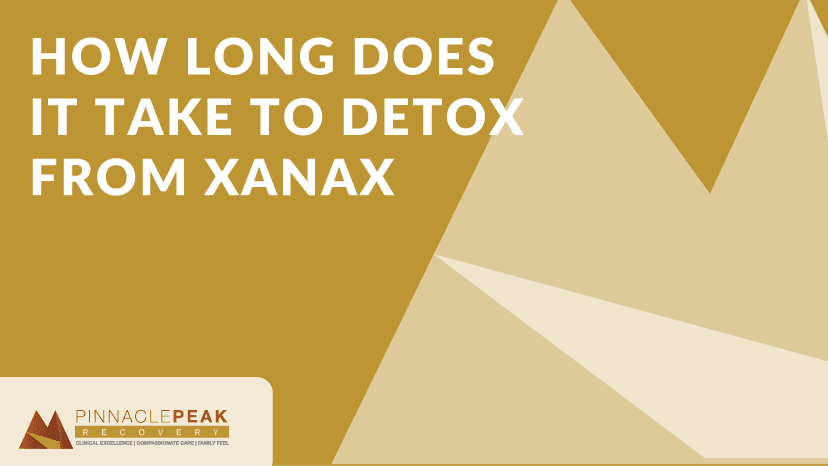Xanax Side Effects

I have been living with debilitating fear, stress, and worry since I was a teenager. It gets so bad that I can physically feel the anxious energy take over my body and mind. The fatigue, muscle tension, and headaches made it impossible for me to cope with everyday situations. I could not live this way any longer, and I started taking prescription Xanax to cope.
Anxiety is one of the most common mental health issues prominent in today’s society. In Arizona, 40.8% of adults reported symptoms of anxiety or depression. Of those, 27.4% were unable to get counseling or treatment. This has led adults to find their own ways of treatment whether conventional or not.
I tried many unconventional forms of treatment with no real change, and I thought Xanax would be a panacea for my severe anxiety. I was relieved to have Xanax as an option for me. My doctor did discuss some of the side effects of Xanax with me but I didn’t think much of them. Of course, there are those inserts that come with the prescription as well but who even reads those? I did not realize some of the more serious side effects of Xanax, and I wish I had because it was definitely not right for me.
I ended up going to the ER because I had severe shortness of breath and a rapid heart rate. My doctor said it was the worst reaction she had ever seen, but that it was a rare side effect of Xanax. She placed me on a different medication.
Had I done my research I would have known what was happening and been able to handle it better.
What Is Xanax and What is it Used for?
Xanax is a pharmaceutical medication in the benzodiazepine family. It is used in the treatment of panic disorder and general anxiety disorder. Some other uses of Xanax include the treatment of sleep disorders, seizures, and alcohol withdrawal.
The medical name for Xanax is Alprazolam. In the street market, Xanax can go by z bars, zannies, footballs, goofballs, or benzos. Xanax is prescribed to be taken orally but can be snorted or injected.
Xanax works by using neurotransmitters in the brain, specifically enhancing the action of gamma-aminobutyric acid (GABA). This causes the central nervous system to slow, creating a euphoric effect and causing drowsiness.
What are the Most Common Xanax Side Effects?
The most common side effects of Xanax include:
- Dizziness
- Drowsiness
- Fatigue
- Trouble concentrating
- Lightheadedness
- Slowed movements
These side effects usually dissipate with time; however, always consult a doctor if they become a problem. Certain activities such as driving a car are not recommended until you know how Xanax affects you.
Serious Xanax Side Effects To Watch Out For
More serious side effects can occur with Xanax. These can include:
- Lightheadedness to the point of passing out
- Increased heart rate
- Shortness of breath
- Memory problems such as memory loss
- Increased feelings of depression or thoughts of suicide
- Severe allergic reactions can occur
If at any point while taking Xanax you have thoughts of suicide, seek medical attention immediately.
What Are the Signs Of Xanax Use?
For those that use Xanax, there are signs of when they have taken the medication and when they have not. Some signs of Xanax use are mood swings, brief feelings of euphoria, confusion, trouble with memory such as memory loss or incorrect memories, dizziness, and slurred speech. After the effects of Xanax wear off, the person can experience dramatic mood changes, erratic behavior, and irritability.
Prolonged use of Xanax can lead to addiction. Signs of addiction can include withdrawing from friends and family, losing interest in activities or hobbies, absence from work, school, or obligations, financial problems, changing groups of people they hang out with, or changes in schedule and sleep.
Short-Term Effects Of Using Xanax
Xanax can be very helpful for anxiety treatment in short-term use. However, addiction to Xanax is still possible even with short-term use. The main short-term effects include euphoric feelings, physical or emotional dependence, and mood swings that can include irritability.
Long-Term Effects Of Using Xanax
Prolonged use of Xanax can cause physical and emotional effects. These include:
- Dementia
- Liver problems
- Kidney problems
- Motor and language skill impairment
In large doses, Xanax can be toxic to the body. Especially when mixed with other depressants such as opioids or alcohol, Xanax can cause breathing to slow or stop, leading to coma and possible death. If a Xanax overdose is suspected, flumazenil can be used to counter the effects. However, it is only used in cases of severe poisoning. Always be open and honest if seeking treatment for an overdose. Healthcare providers will need to know about all substances in the body in order to treat patients accordingly.
Arizona does have the Good Samaritan Law in place. This protects anyone seeking overdose treatment and anyone who called for help in the situation from prosecution of their substance use. The law encourages bystanders to call for help if they suspect an overdose, whether they know the person or not.
Though liver and kidney damage is rare in just Xanax use, when mixed with other substances damage can occur. Xanax mixed with alcohol can stress the liver more than just using one or the other. Signs of liver damage include:
- Jaundice (yellowing of the skin and eyes)
- Swelling in legs, ankles, and abdominal region
- Dark urine
- Fatigue
- Nausea, vomiting, or loss of appetite
- Itchy skin or bruising easily
About Xanax Withdrawal, Detox and Associated Symptoms
Xanax is considered highly addictive due to the fact that it is easy to build a tolerance to the medication. Xanax withdrawal symptoms can start in as little as a few hours and can include:
- Increased anxiety
- Depression
- Seizures
- Nausea
- Sweating and restlessness
- Difficulty sleeping and nightmares
- Irritability and muscle tension
Detox from Xanax can be difficult and uncomfortable. It is never recommended to stop using Xanax completely when attempting to stop taking it. Detoxification, or Xanax detox, is recommended to help safely wean off of the drug. Using this method can make withdrawal symptoms more tolerable and ensure the process is not too hard on the body. Having a support system during detox is also recommended as the toll is not only on the body but on the mind as well.
Options for Treating Benzo Use Disorder at Pinnacle Peak Recovery
Benzodiazepine use disorder is a diagnosis given to a person who is dependent on benzodiazepines such as Xanax. Treatment plans can vary and will always start with a medical assessment most often followed by detox. At Pinnacle Peak Recovery, we tailor our program for each individual and incorporate family values into the treatment process. Our benzo addiction treatment includes:
Assessment – each client who comes to Pinnacle Peak Recovery will receive an assessment before starting treatment. This allows us to come up with a plan for success based on the client’s individual needs. No two clients are the same and our treatment approach reflects personal care during all stages.
Detox treatment – our detox program is medically supervised and implements daily therapy. We work with each individual as this can be the most uncomfortable part of treatment. Detox can last days and our staff is available around the clock for support.
Inpatient rehab – structured 24/7 onsite treatment program, where the work begins. Our facility has licensed therapists and focuses on cognitive behavioral therapy and dialectical behavioral therapy. These therapies help with coping skills and changing the way problems are viewed and handled. We also strive for a family environment and are here every step of the way. Life skills classes and a set schedule help clients get a sense of being back on track. Clinicians are available to address behavioral health issues as well as work with substance use disorder. Everything a client needs is conveniently in one place.
Outpatient rehab – for those who cannot get away from work or home. We use the same guiding principles that make up our inpatient program. Therapies and behavioral health treatment as well as substance use disorder classes are offered for this program. The client will commute for treatment every day as opposed to staying in our facility. Each individual will be evaluated for the course of treatment and given the same family approach to care. The program lasts as long as the client needs.
Mental health services – dual diagnosis offerings and treatments. Mental health disorders and substance use disorders go hand in hand. Our facility is equipped to treat both and use individualized treatment plans for each client.
Continuum of care – At Pinnacle Peak Recovery, we believe success comes from continued care. We encourage all alumni and their families to come to weekly meetings and stay involved with the recovery community.
Family value is our top priority at Pinnacle Peak Recovery. We believe in individual treatments to pave the road to recovery. If you or someone you know is living with Xanax addiction, do not hesitate. Call us today at 866-377-4761
Call To Talk To One Of Our Professionals Today!
FAQs About Xanax Side Effects
Why Is Xanax Medication Prescribed?
Xanax can be prescribed to treat anxiety and panic disorders. It is also used to treat seizures, sleep problems such as insomnia, and alcohol withdrawal.
How Does Xanax Affect The Body?
Xanax creates a euphoric feeling in the body creating a calming effect. This is because the medication causes the central nervous system to slow down.
How To Cope With The Side Effects Of Xanax?
The side effects of Xanax can become less prominent over time. If the side effects start affecting everyday life or become severe, seek medical advice.



